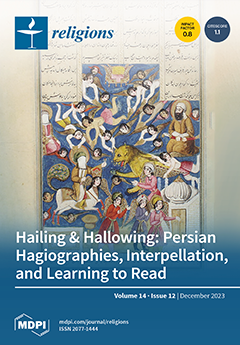The ferry from Havana to Regla, Cuba, transports visitors from today’s cruise ship docks across a brief stretch of water in about 20 min. Despite its brevity, this watery passage symbolically foregrounds the Marian devotion on the southern rim of the grand harbor.
[...] Read more.
The ferry from Havana to Regla, Cuba, transports visitors from today’s cruise ship docks across a brief stretch of water in about 20 min. Despite its brevity, this watery passage symbolically foregrounds the Marian devotion on the southern rim of the grand harbor. In this way, water conjoins African diasporic histories of enslavement, labor, survival, resistance, daily life, and religiosity within Havana Bay, into which two urban geographies project. Regla historically served as a municipality for dockworkers and shipwrights and became an enclave for identity creation, civil association, and religious worship for people of African descent. The church and sanctuary of Nuestra Señora de Regla (“Our Lady of Regla”) has nurtured this connection as it houses effigies of the venerated Virgin, adorned in blue. The Virgin of Regla represents one of two, along with El Cobre, of the most important Marian devotions on the island of Cuba and is the focus of insular and diasporic pilgrimage. In Regla, the Virgin’s nautical iconography decorates the sanctuary and historically connects her to the working populations who sustained this devotion as they serviced Havana Harbor with their labor. Adjacent to the church is a waterfront park that looks out on the water and the city of Havana beyond. Bordered on one side by a low wall, the park incorporates a large ceiba tree,
ceiba pentandra, also known as the silk cotton or kapok tree, a tropical species with a large trunk and spreading tree canopy native to Mexico and Central America, the Caribbean, northern South America, and West Africa (with a similar variety found in South and Southeast Asia). This article considers landscape as a methodology for examining the interplay of this tree and the adjacent church as interwoven and mutually reinforcing sites of devotion for the worship of the Virgin Mary and the oricha Yemayá in Regla, Cuba, with a view toward a broader set of local and global spaces.
Full article





